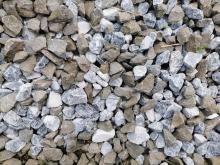Scoping the risk of bulk aggregate (topsoil, sand, gravel, stone, wood chips) movement into and within Scotland

PHC2023/06 explored the plant health risks associated with the movement of bulk aggregates, such as topsoil, sand, gravel, stone, and wood chips, into and within Scotland. Currently, some of these materials are not specifically considered within the UK Plant Health Risk Register, and there is limited regulation or awareness of the potential for plant pests and pathogens to travel via these pathways.
The study engaged with key sectors including building, quarrying, forestry and landscaping, but found that biosecurity concerns were not generally recognised within these industries. Laboratory tests and literature reviews highlighted wood chips and topsoil as the materials with greatest risk. Wood chips, often imported and untreated, were found to contain harmful plant pathogens such as Phytophthora bilorbang, while topsoil was flagged due to its untraceable provenance and lack of mandatory treatment standards. Sand’s role in plant health remains uncertain, although it is known to harbour human pathogens. Locally sourced stone and gravel were considered lower risk, although occasional live plant pathogens were detected.
The report highlights the need for improved awareness, tighter standards, particularly for topsoil and chipped wood and further investigation into lesser-known risks such as those posed by sand. Drawing on international examples like New Zealand’s Import Health Standard, the authors recommend strengthening regulatory measures and including bulk aggregates in national plant health assessments.
